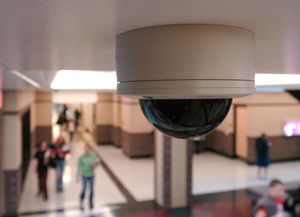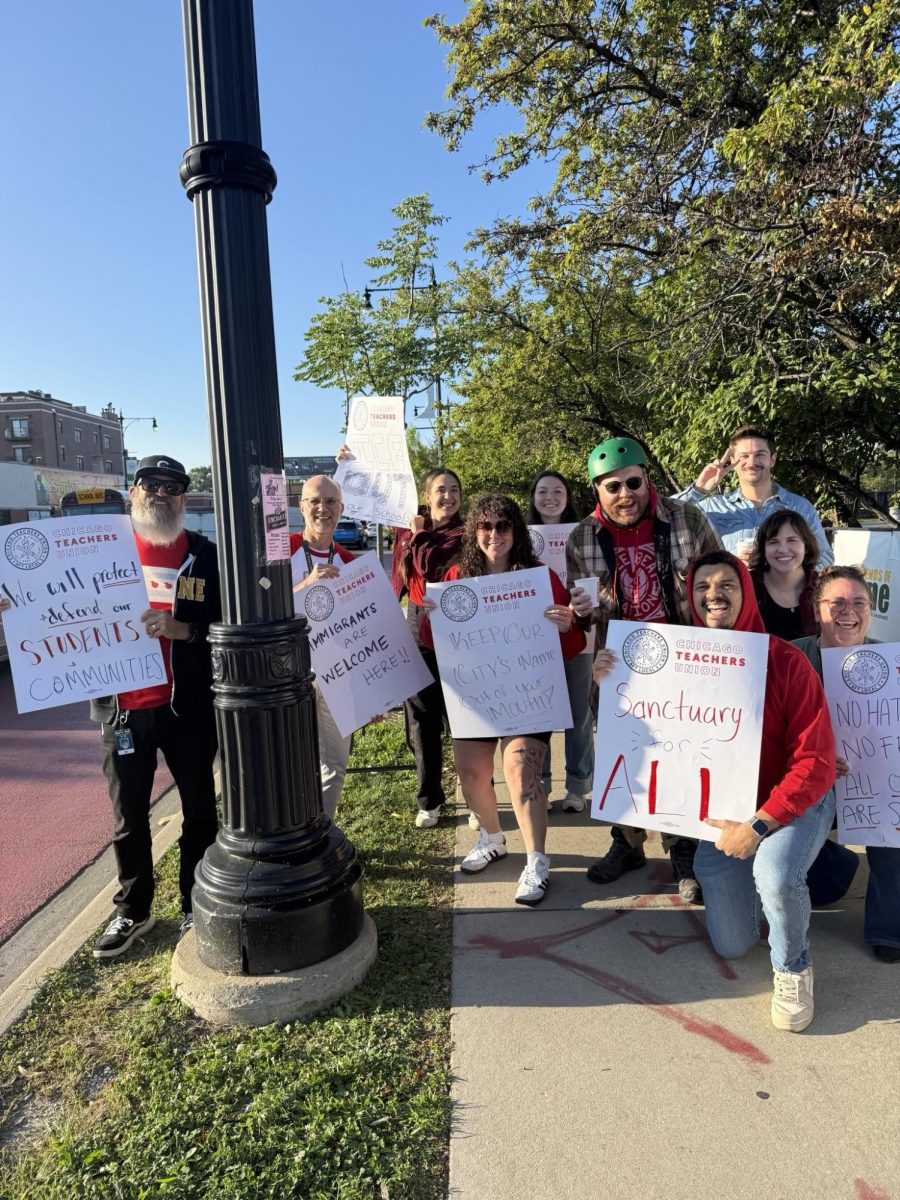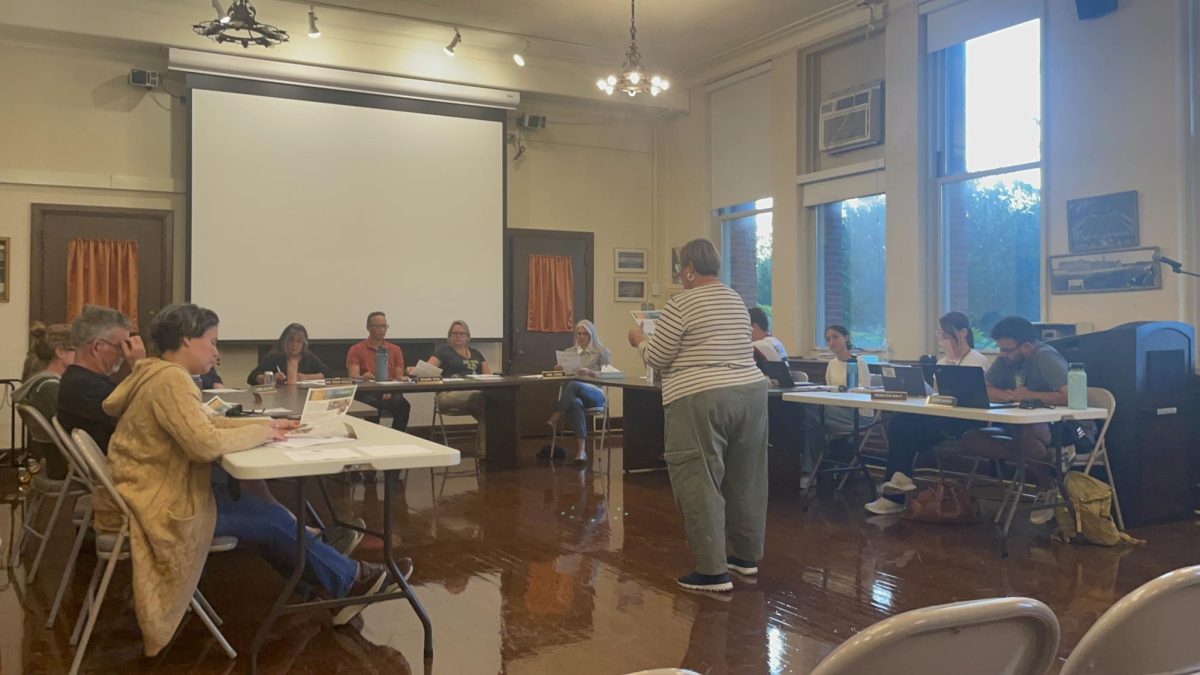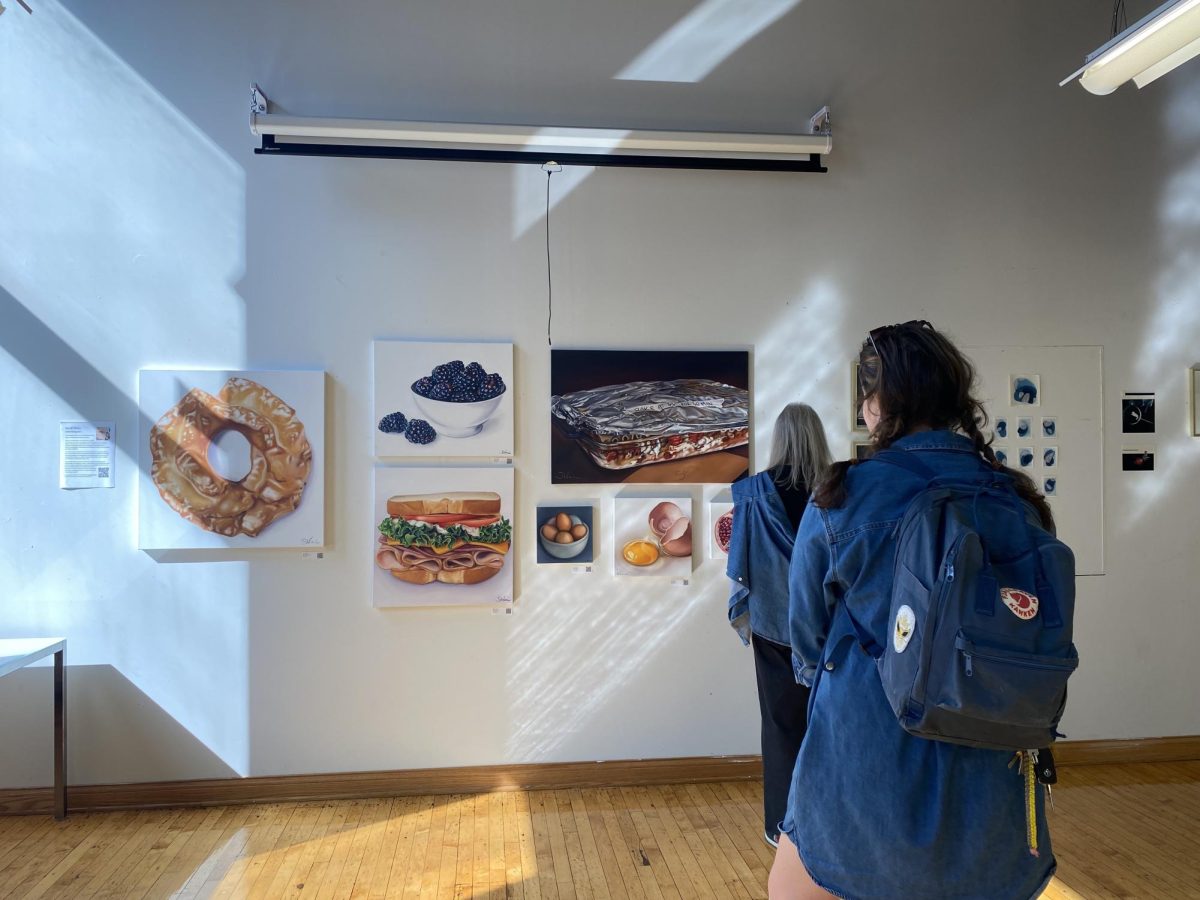By Walker Post
With the installation of 13 new security cameras on the outside of Lane’s building and 16 existing ones inside the school, debates have triggered among students and teachers as to whether or not these cameras will be used productively.
Several security guards were fired over the summer due to budget setbacks, which means the remaining guards are being asked to do more with less. Plans to install cameras were already in the making before the security guard setback. They are an alternative way to help keep students safe and Lane’s property intact. Lane has plans to put more cameras inside of the school, but this requires more mandated funds to be given by the company, Safety and Security, who installed the earlier ones.
Nick Anagnopoulus, Chief of Security, thinks that the security cameras will be helpful in making sure that students are protected in case of an incident on campus.
“We lost a decent amount of security guards because of money, so [security cameras] will assist us in watching things happen throughout the day,” Anagnopoulus said. “It gives us an extra tool to ensure the safety and security of the students.”
Dr. Dignam stated that if Lane got back some of its budget they would hire back security guards.
The installation of these security cameras was partially influenced by a Parent Teacher Student Organization (PTSO) petition to have Lane put in cameras and lights on the perimeter of the school. This petition accumulated 639 signatures out of 1,000, “needed”, impacting the mandate to put in cameras.
With the addition of the Kerry Wood Cubs Field and the Clark Park boathouse, the advocates of installing cameras around the outside of Lane feel it will be beneficial to the building to have heightened security. Lane’s PTSO is concerned that because of the two public facilities being opened, it will lead to an increase in number of strangers that could potentially walk through the school’s property.
CPS’s department, Safety and Security, mandated that Lane install these cameras, which led to a bid process to determine which company would get the job. Windy City Electrics was chosen as the company to oversee the implementation. The cost of the 13 outside cameras was around $56,000, with each camera costing up to $5,000.
Mr. Miceli, Director of Technology, has access to all of the live feeds, inside and outside of the school. All of the footage being recorded on the outside of Lane is backed up and also sent to the city’s 911 Center.
“There will be more cameras,” Miceli said. “It’s just a matter of money.”
The Safety and Security department of CPS estimated installing cameras throughout the whole school would have been at least half a million dollars.
Until 2013, Lane was the only CPS school not to have any security cameras installed on its property.
“There are about 650 plus schools in Chicago and the only school without any security system at all was Lane,” Dr. Dignam said. “For 13 years, that I know of, we had tried to get security cameras, even when I was a teacher in the late 90’s we were still trying to get cameras in the building.”
Mr. Bertenshaw, an English teacher, disagrees with the decision to install more cameras in Lane and thinks that it is doubtful that a security camera will be able to do more than the guards who were replaced
“Cameras don’t equal security. There’s not the human element, there’s not the cunningness and cameras can’t anticipate crime,” Bertenshaw said.
According to the Chicago Sun Times, $26 million was spent on high-resolution cameras throughout CTA rail stations, but crime has rose 21% in 2013, within train stations. There is not proper funding for live footage, so instead the CTA must rely on the footage being stored in a database before being downloaded later on.
Bertenshaw understands the need for cameras in places like computer labs, but does not approve of cameras in the hallways, entrances or on the perimeter. Bertenshaw is concerned about the cameras being used for purposes other than what the staff says they are designed for.
“One of the great themes of literature is that things may not be what they seem,” Bertenshaw said. “It may start out as security and become surveillance.”
Miceli mentioned that 13 cameras inside might not have been enough for a school as big as Lane, but is confident they cover a majority of the building. He is glad to see Lane headed in the direction of being more monitored by cameras because of its relevance in solving internal problems.
“They’ve helped alleviate some problems we’ve had in the past when we didn’t have the cameras,” Miceli said. “The cameras in the perimeter haven’t been in play long enough for us to test those out.”
Bertenshaw argues that if Lane is going to create a system that has the ability to watch over its students then they should not be able to set the rules for what is “constitutional”. He would like the students and faculty to get together to discuss what the school should be in their power to do with these tapes.
“A compromise would be let the people who are being watched know that you as the people who are watching the film have some sort of standards that you will follow,” Bertenshaw said.
He would like to see a system formed so that if the cameras are accidently misused, there is a way to respond to that. Bertenshaw believes that by creating an official and structural “constitution” that would prevent controversial problems in the future. He gave the example of a teacher using their preparation period to go make copies of a handout at Kinko’s. Bertenshaw is concerned that those watching the cameras, who might think the teacher went to do something non-school related, could potentially take this out of context.
Dignam acknowledges this argument, but brings up the point that he cannot just simply review stored videos to find something in particular. The cameras are not there to catch teachers or students doing something wrong. If something is stolen on Lane property, faculty must first inform the CPD and get permission to examine the cameras.
Ally Cortez, Div. 460, thinks it is a good idea to have cameras on the outside of the building, but does not want them inside.
“In most public buildings it’s understandable, but in a school where people want to have a safe place to learn it’s not ok,” Cortez said. “If people know they’re being watched they’re not going to want to speak their minds necessarily.”
An argument on the side of the increasing number of security cameras in places like CTA rail stations or schools can argue that they cost much less than hired personnel. This can save a company thousands of dollars when considering the options available to them.
“We can’t afford to have a police officer on every corner, but cameras are the next best thing,” said former Mayor Richard M. Daley in 2009.
With the 2013 school year bringing about a number of changes to ensuring the safety and security of the students, Lane is becoming a school that relies on its security cameras just as much as it does its security guards.





